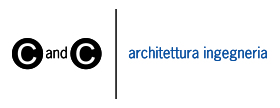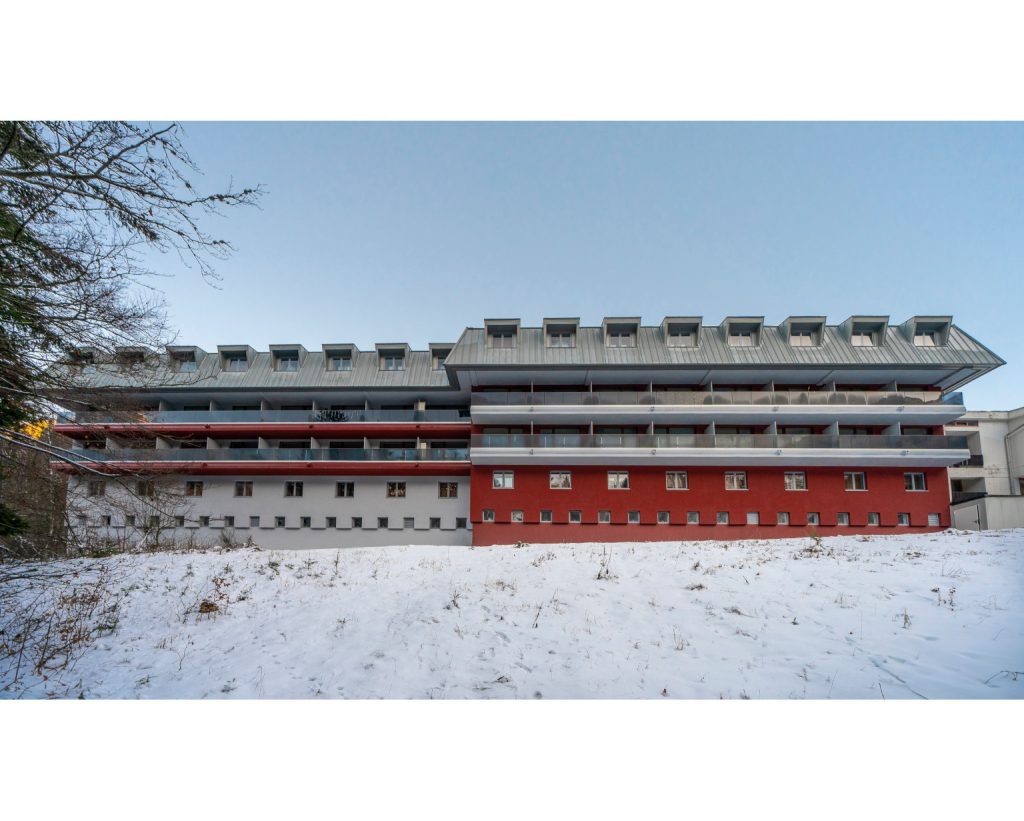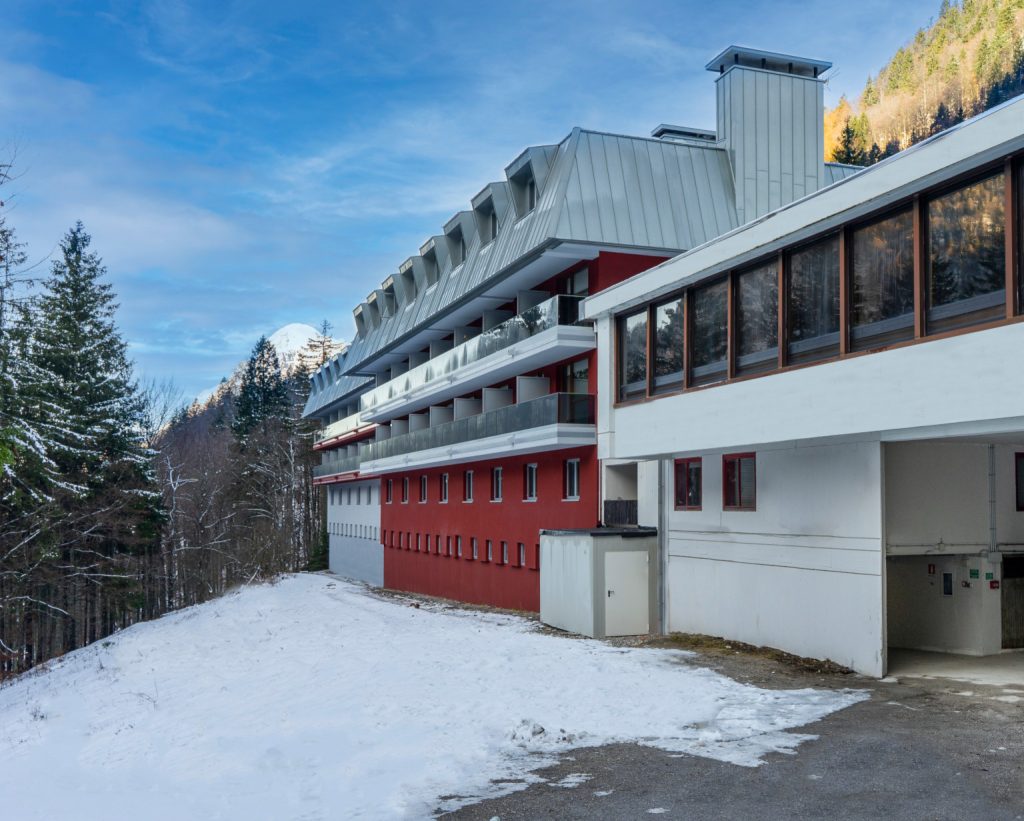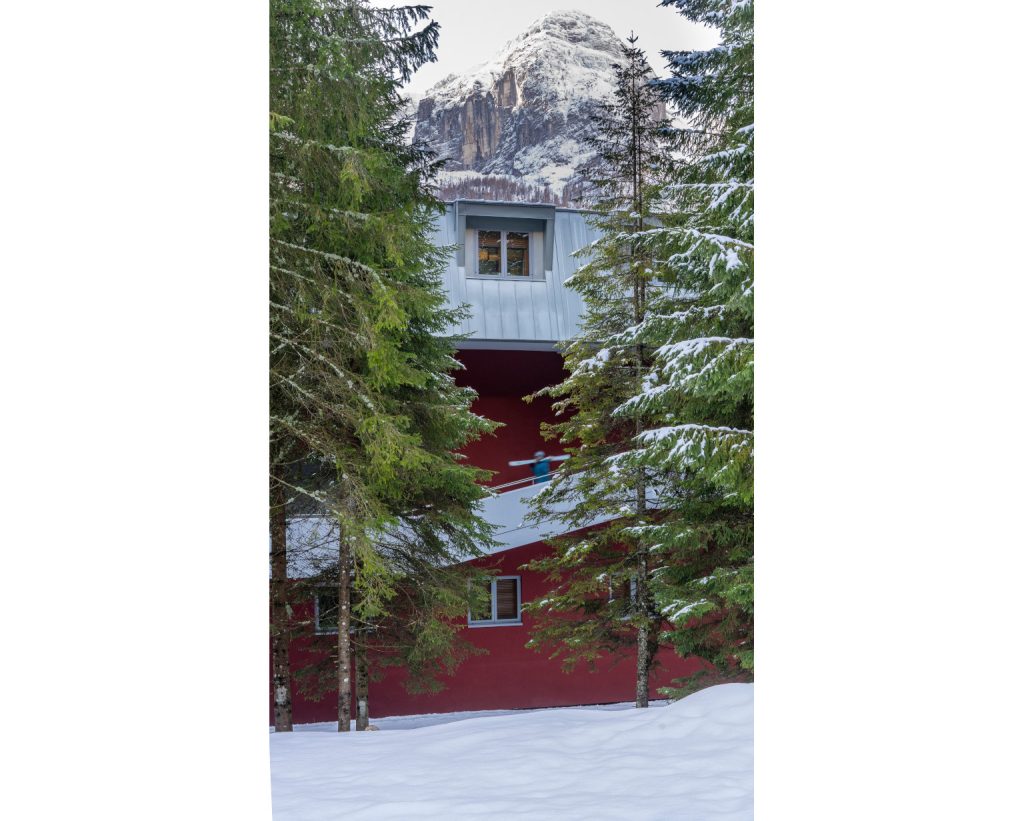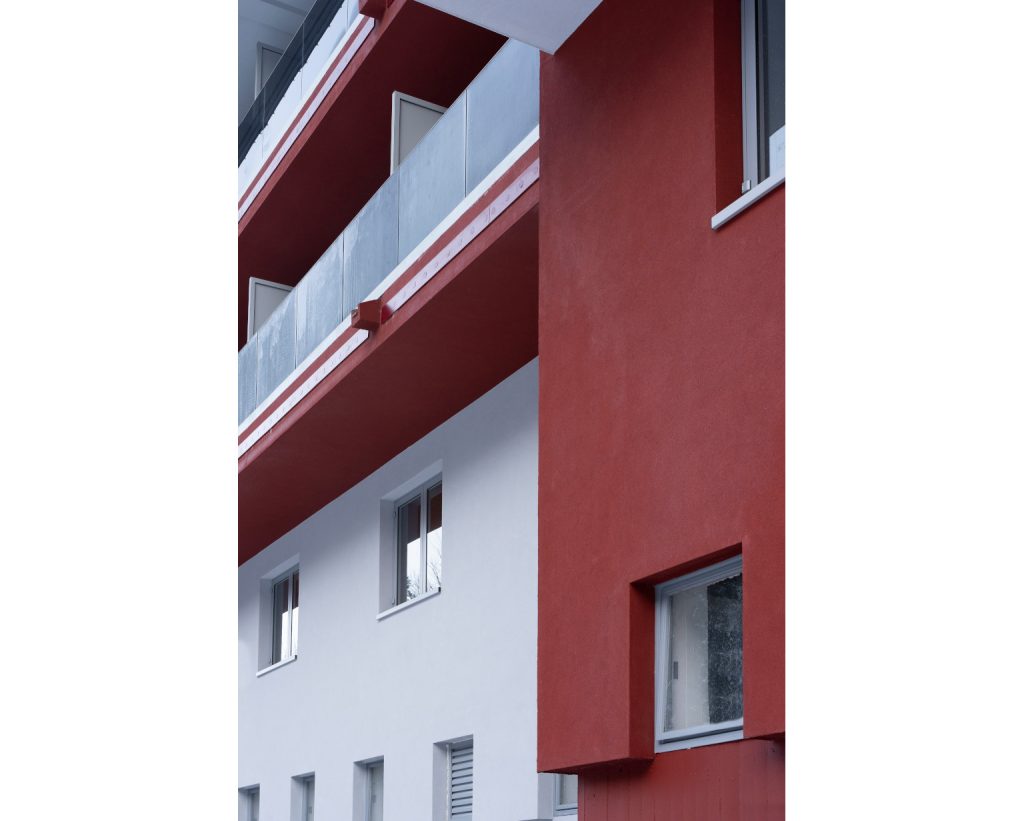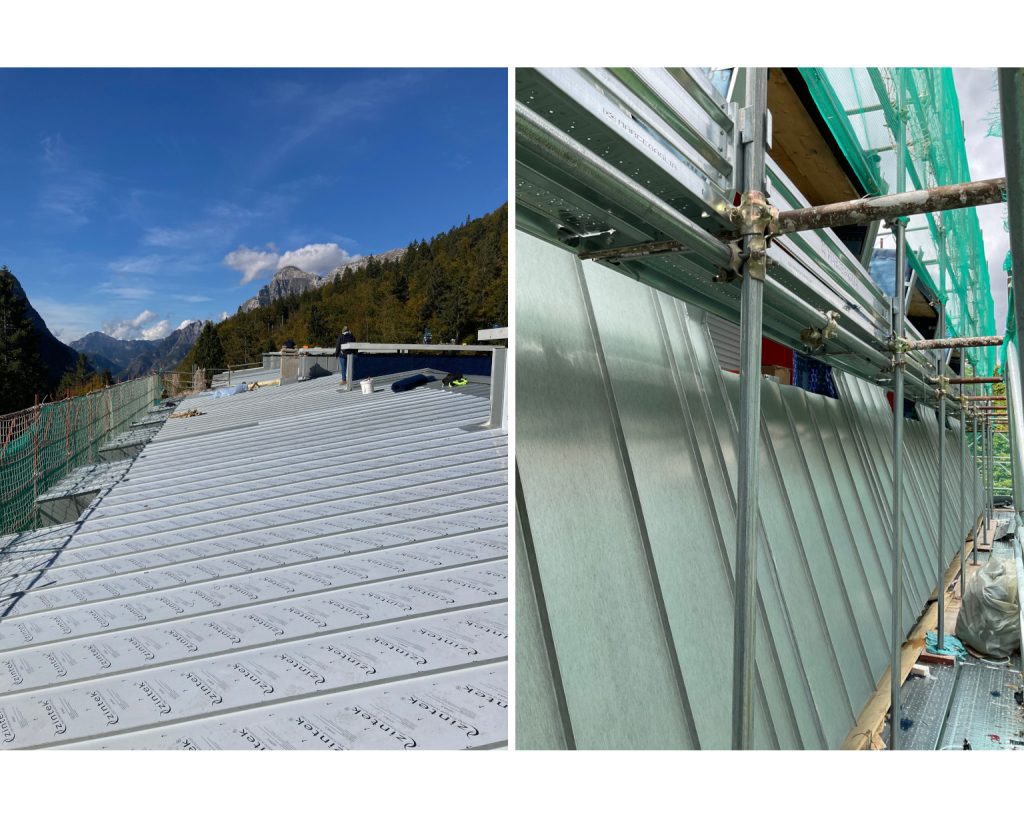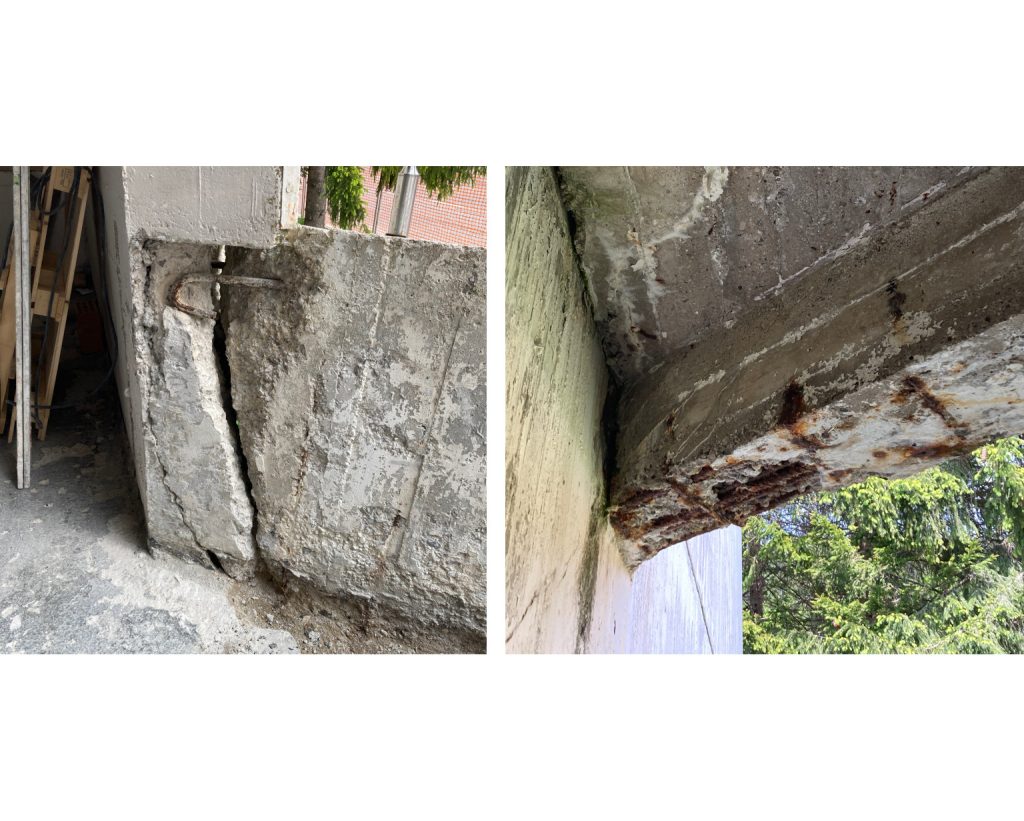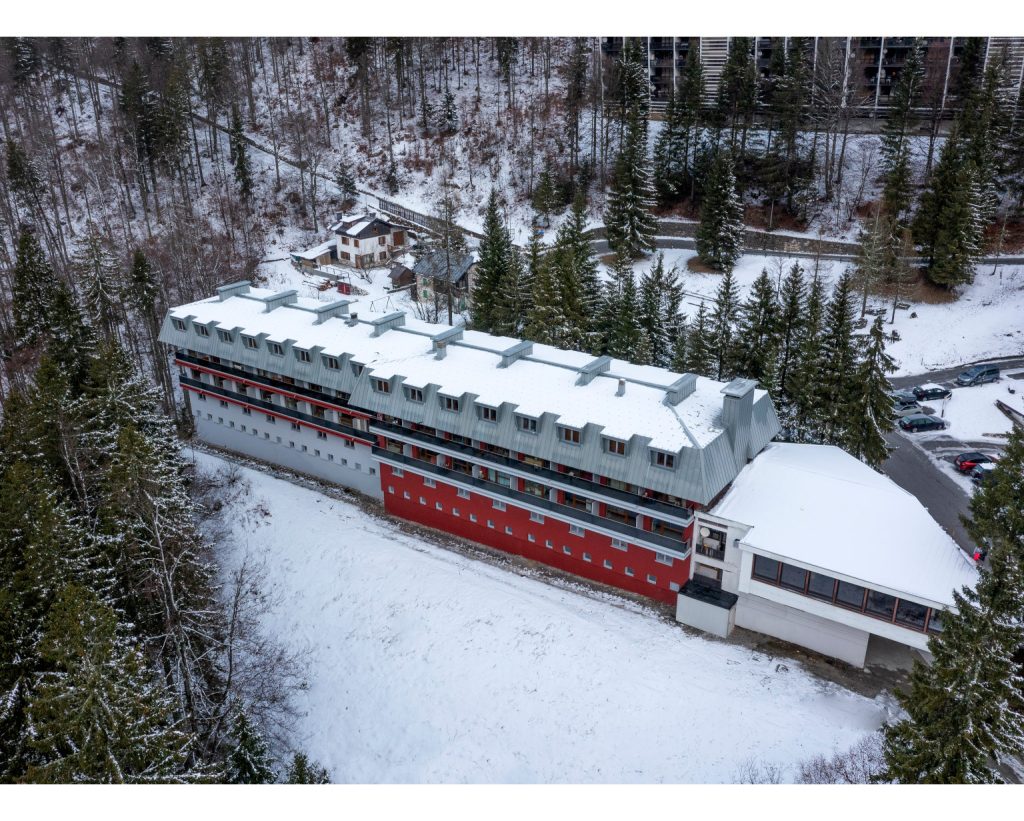Superbonus 110%: more security, less consumption and a new look for a 1970s building
Montasio Condominium
Built during the early 1970s, the Montasio Condominium showed several deterioration signs. The general contractor appointed by the owners to restore the building entrusted C and C with the project of the extraordinary maintenance works, and specified three main objectives: to improve the building’s seismic resistance, to increase its energy efficiency and to comply with the “110% Superbonus” requirements (the tax relief regulated by Legislative Decree no. 34/2020).
To increase the building’s resistance to seismic shocks, critical elements were secured with targeted consolidation and patching of the many widespread cracks in the reinforced concrete. After consolidating the deteriorated wooden structure of the roof, C and C designed a new Zintek (zinc-titanium laminate) cover, incorporating specific solutions for the Alpine climate, such as snow guards. We took advantage of the necessary work on the top to create a “ventilated roof”, which greatly improves the thermal insulation of the building.
With the application of the thermal coating, the replacement of the windows and doors in each apartment and the installation of the new central heating system, the building has improved by three energy classes, reducing its annual consumption from 256.38 kWh/m² to 93.78 kWh/m², or 37% compared to before.
We took advantage of the installation of the cladding and fixtures to completely renovate the condominium aesthetics of the condominium at no extra cost: our careful colour study of the facades and finishes made the most of the two buildings that compose the complex.
CONTENTS
The first focus of our restoration project was the roof, the most damaged part of the building. We decided to keep the original roof structure because the building, with its progressively lighter masses (from the 35 cm unreinforced concrete walls of the garages to the reinforced concrete with brick infill of the four floors above, to the roof in wood and sheet metal), has shown high resistance to earthquakes, such as the 1976 earthquake in Friuli and the 1998 and 2004 quakes in the nearby Plezzo/Bovec basin.
The conversion of the original roof into a ventilated one took into account the alpine climate of the area: for example, the snow filters in the air intake at the northern end of the ventilation chamber are capable of preventing the infiltration of frozen dust.
We chose all the materials used because of their resistance to low temperatures and temperature changes.
The finish of the thermal coating is heat-reflecting to prevent excessive thermal differences between the sunlit surface and the cold surroundings. The exterior concrete surfaces were also treated with special waterproofing and curing paint to increase their durability.
Despite the complexity of the project, due to a large investment (€3.5 million), adverse weather conditions (168 rainy days out of 260 working days) and the isolated location of the site, we completed the project on schedule, and we made it possible for the tenants to benefit from the 110% Superbonus.
